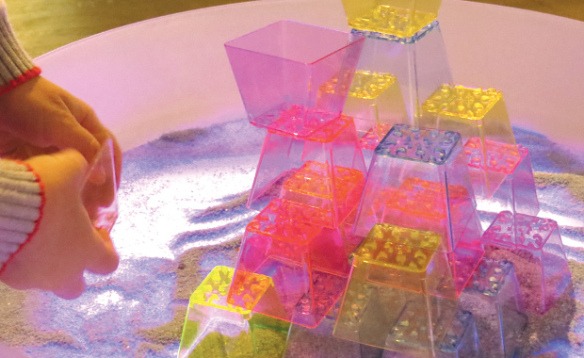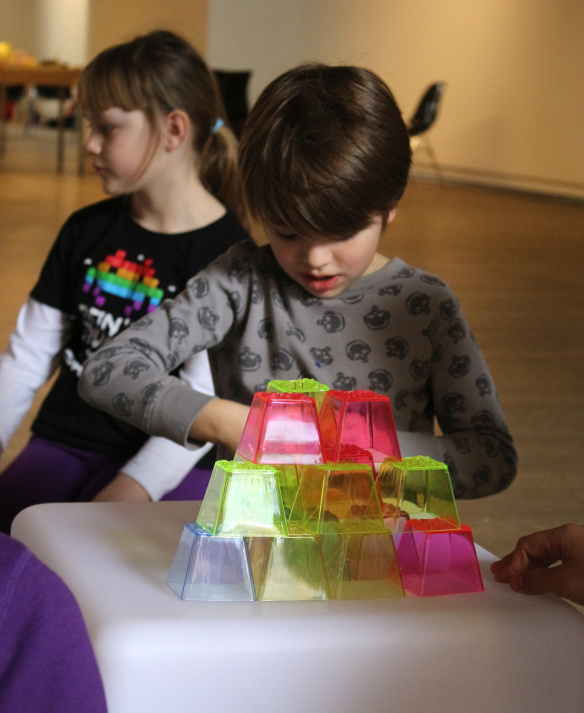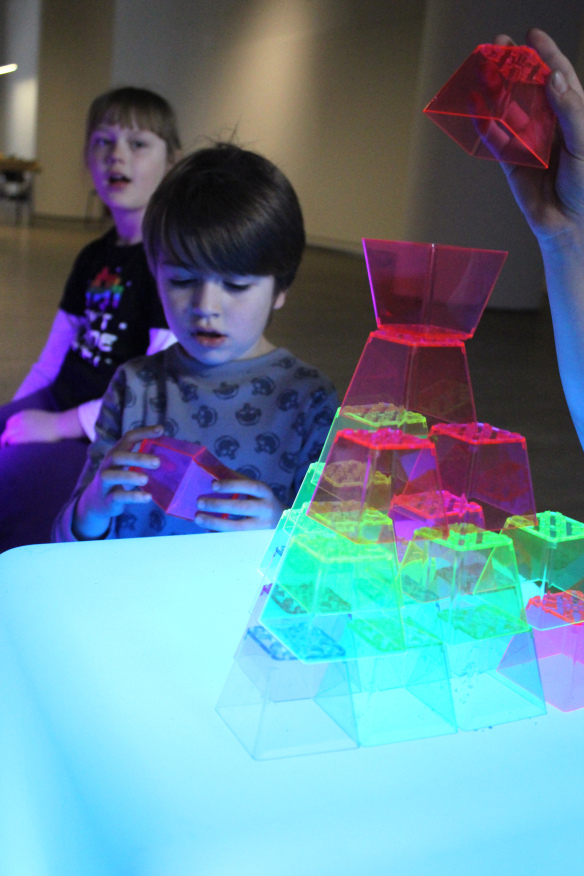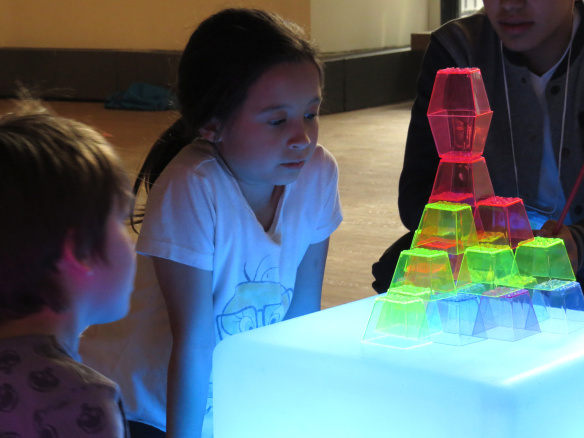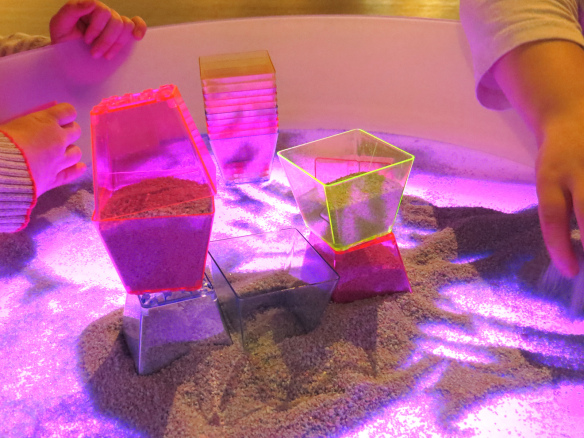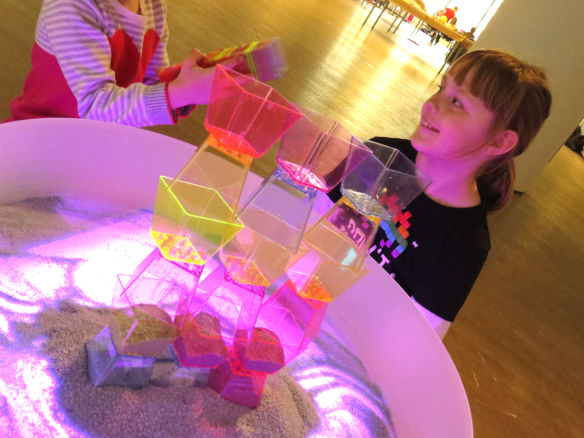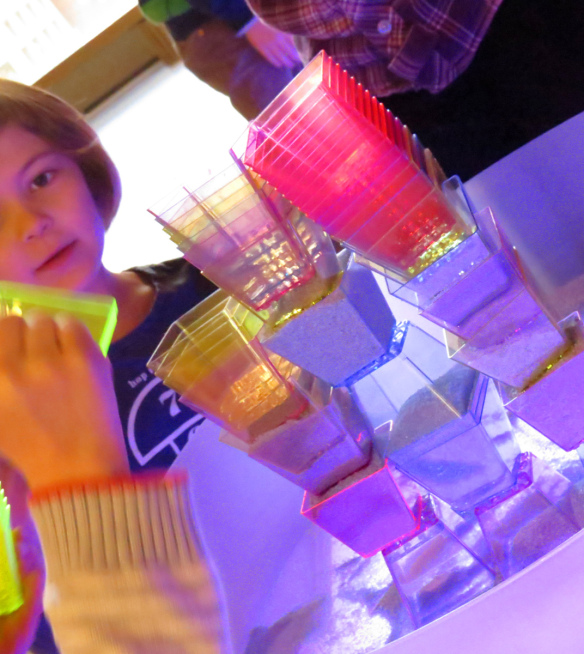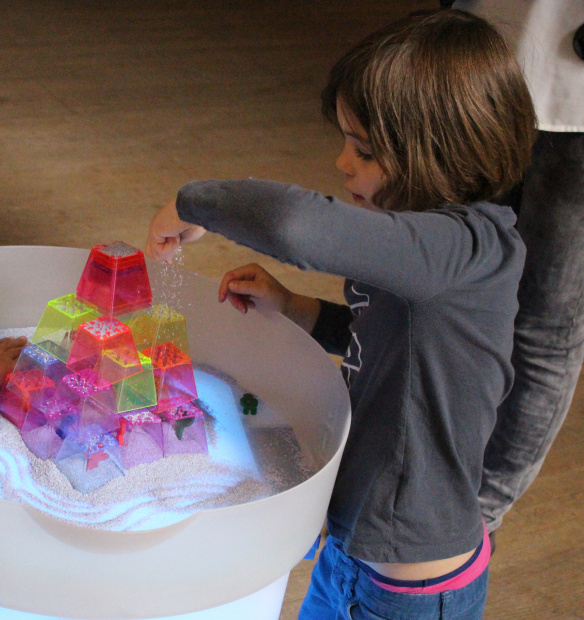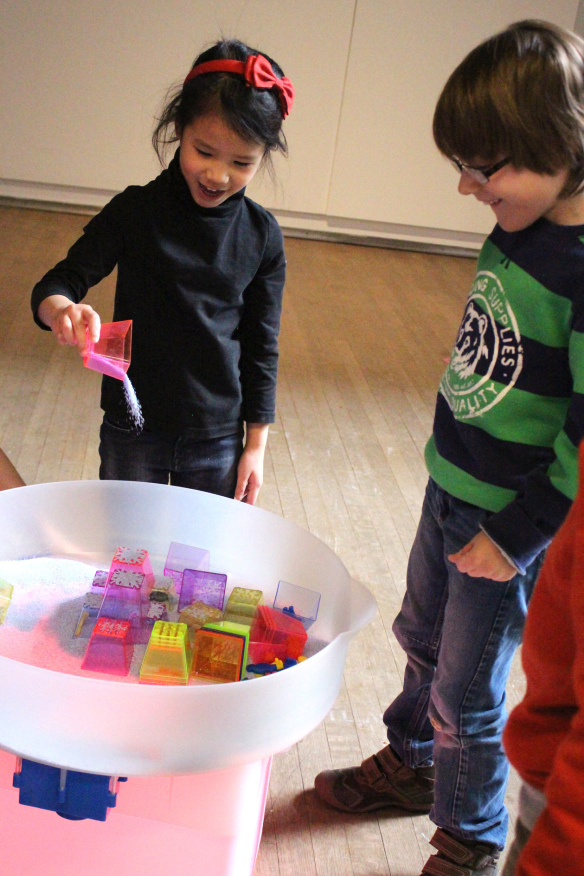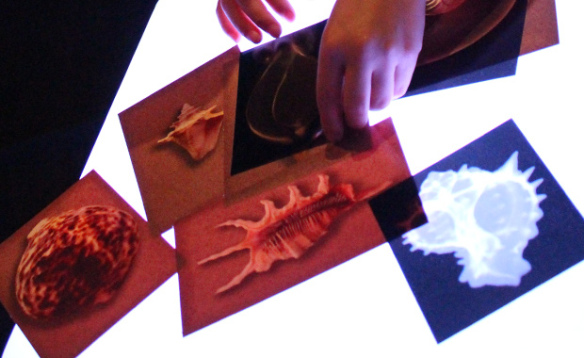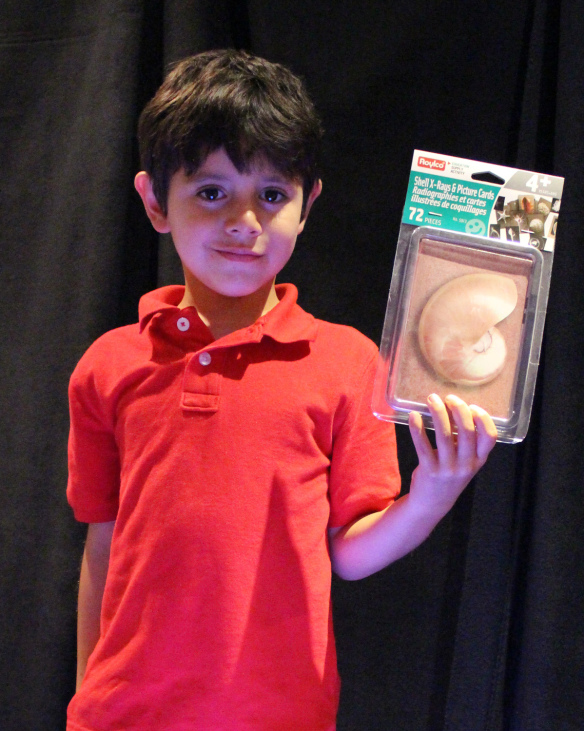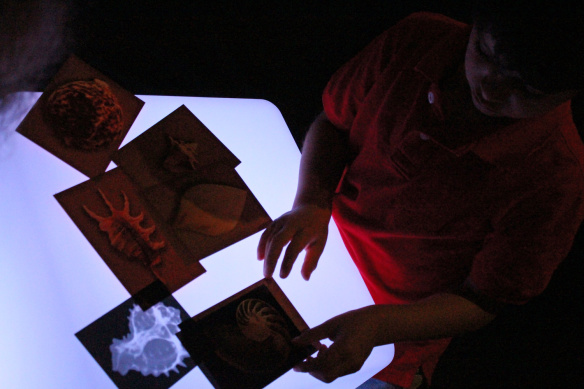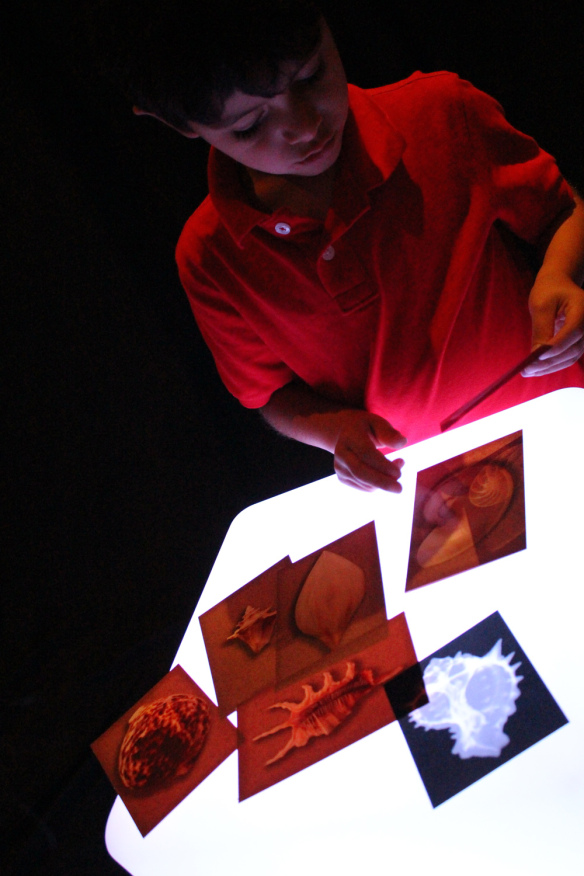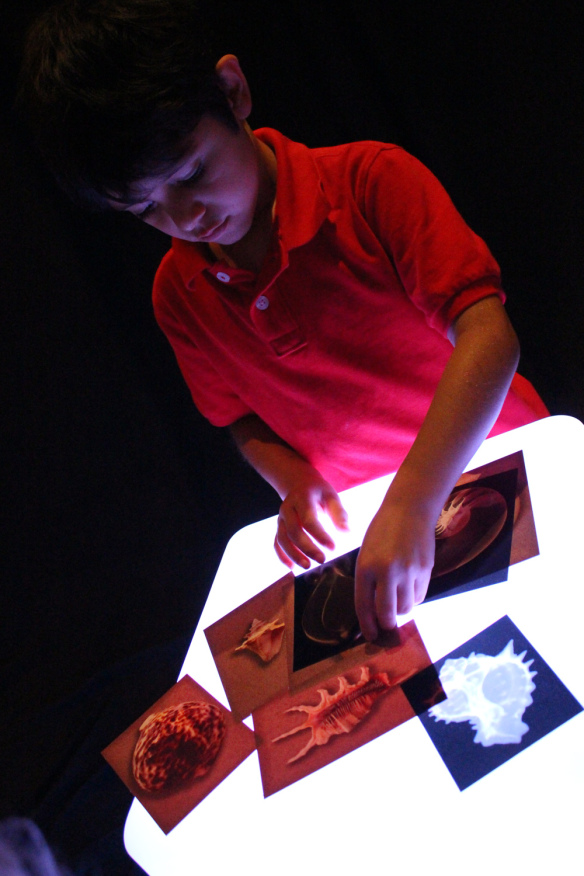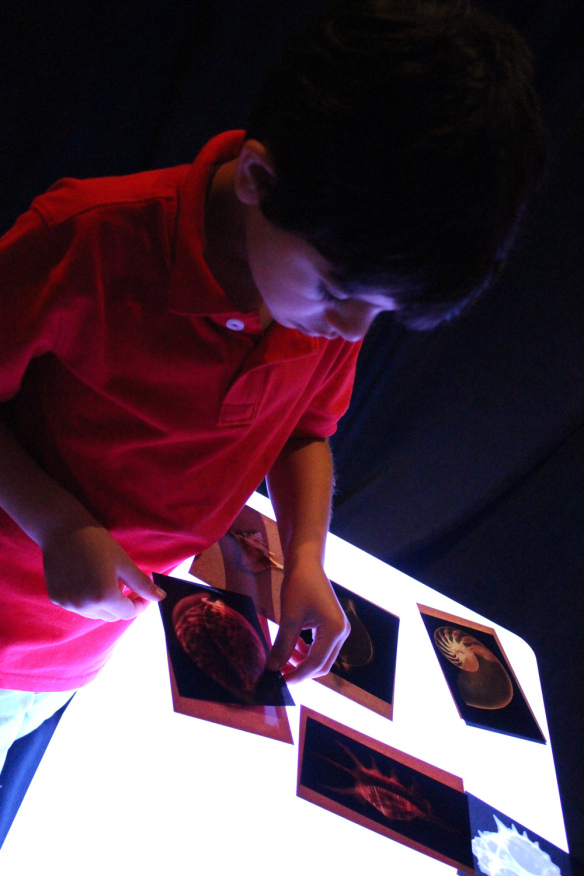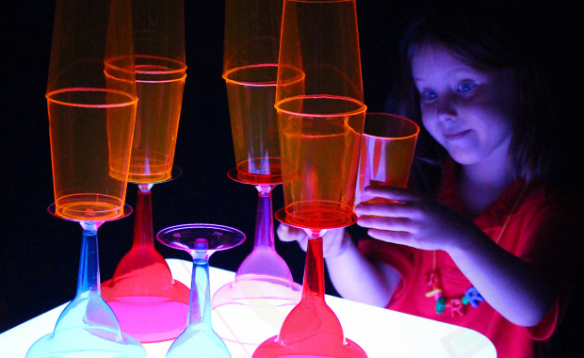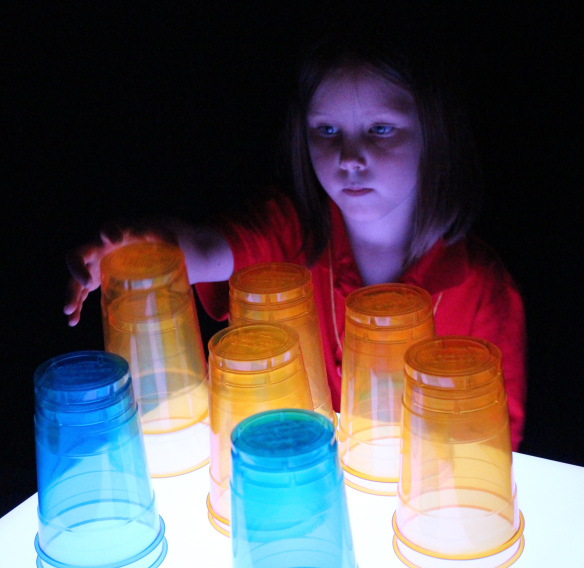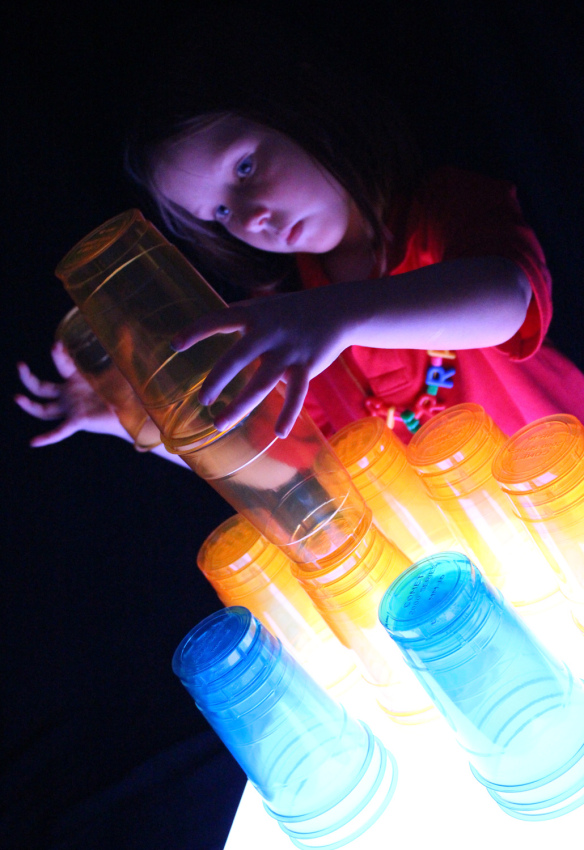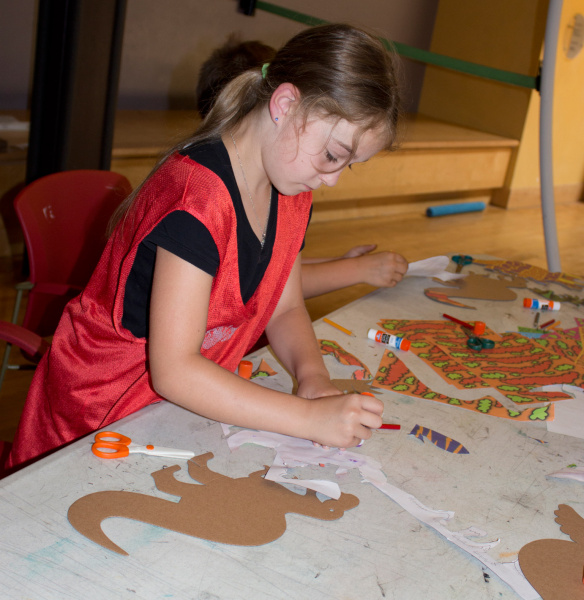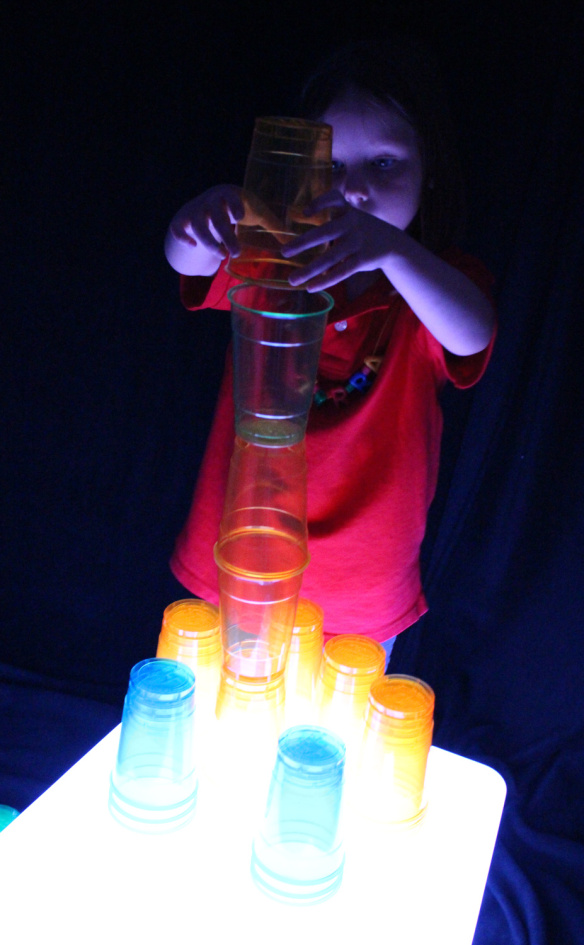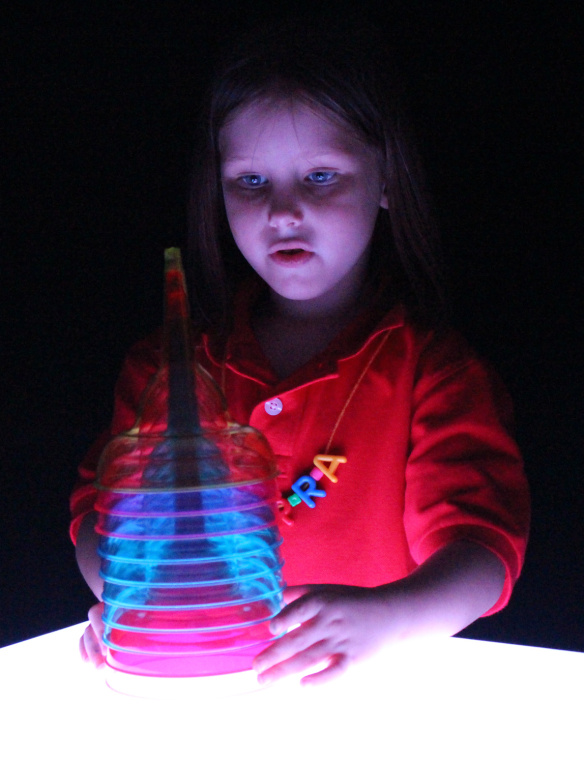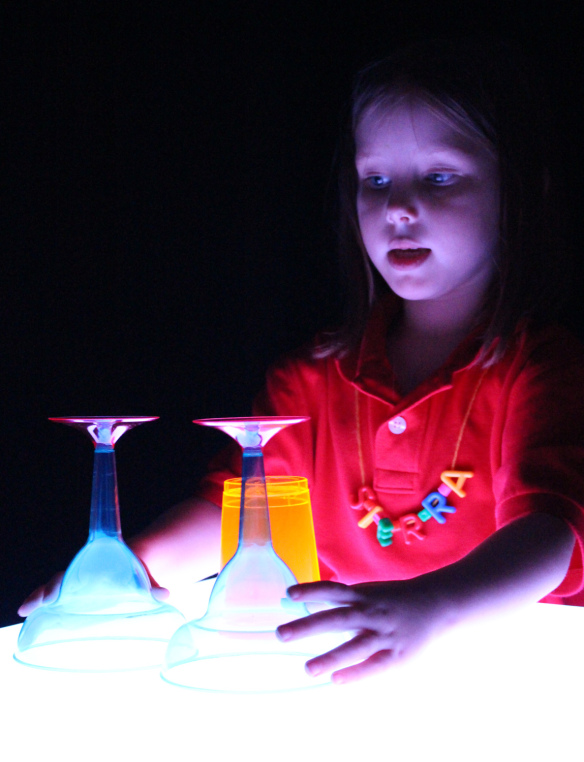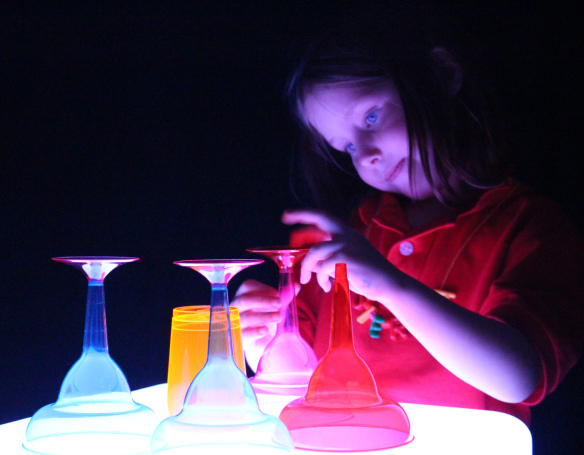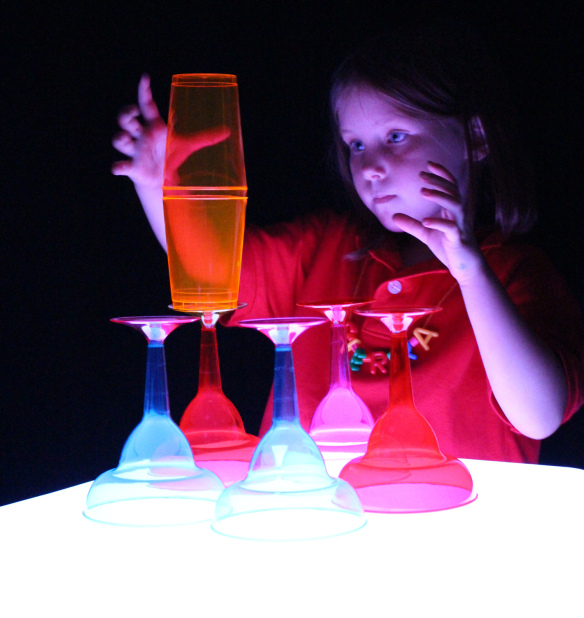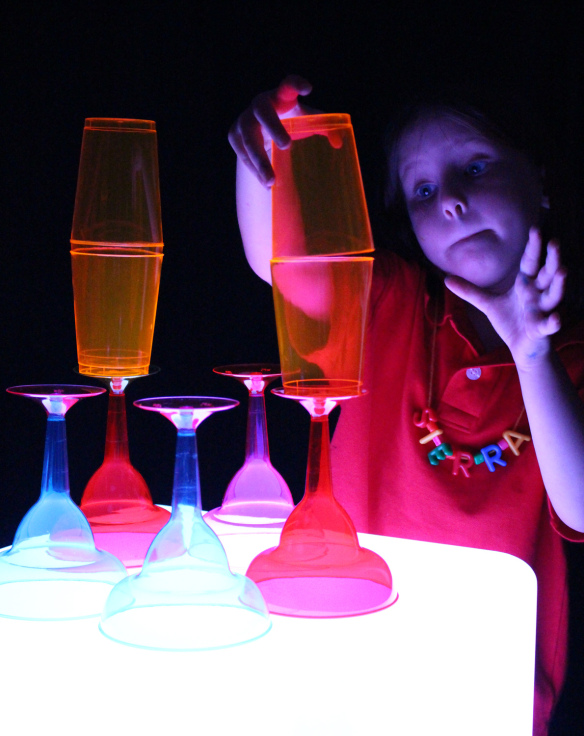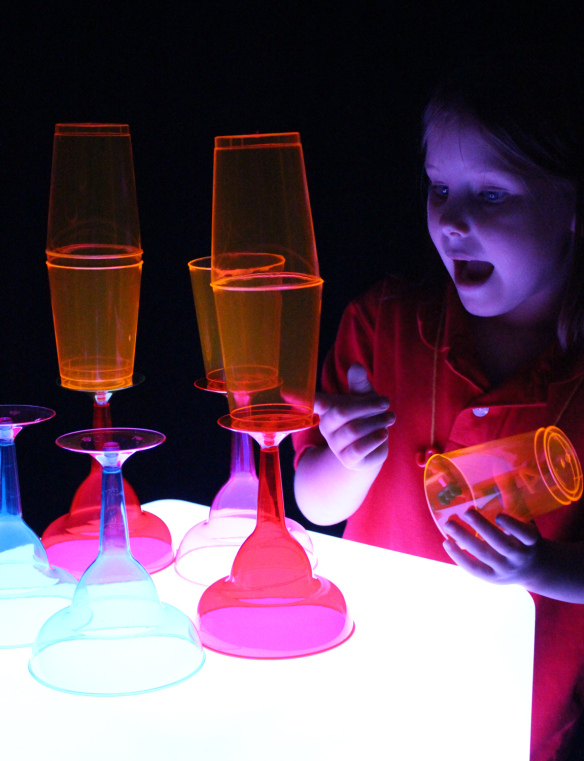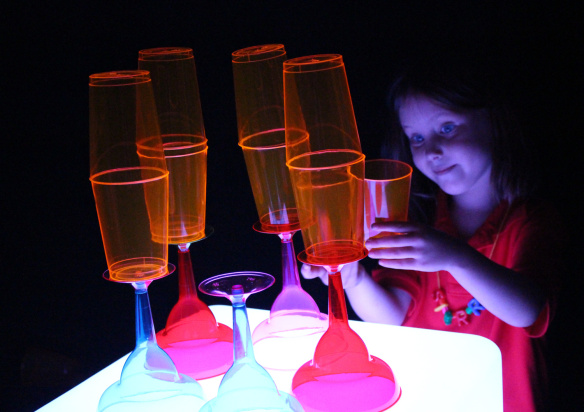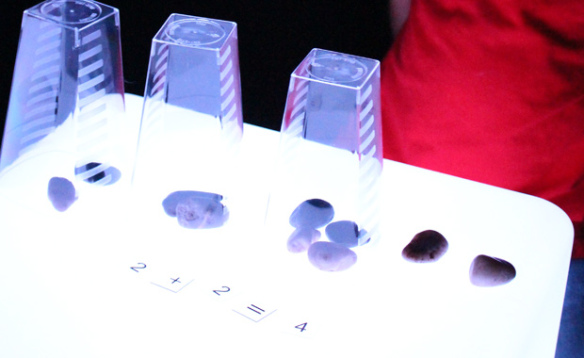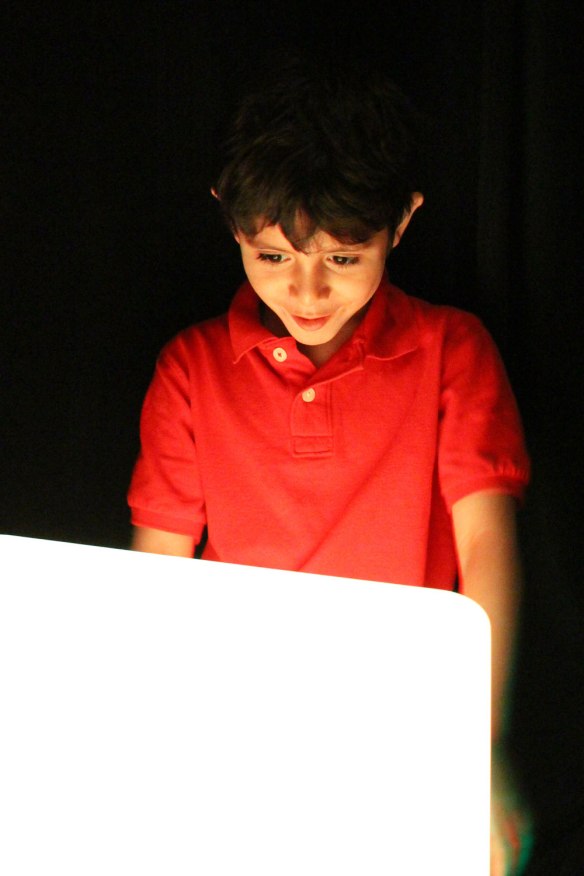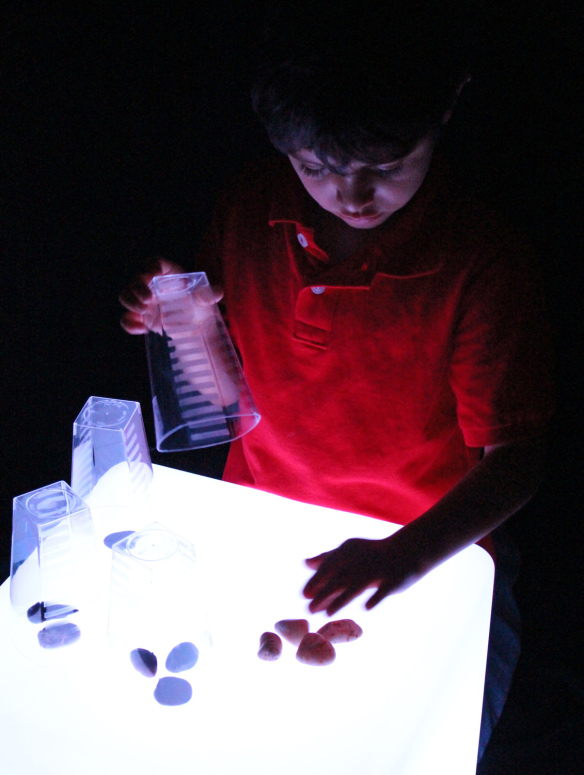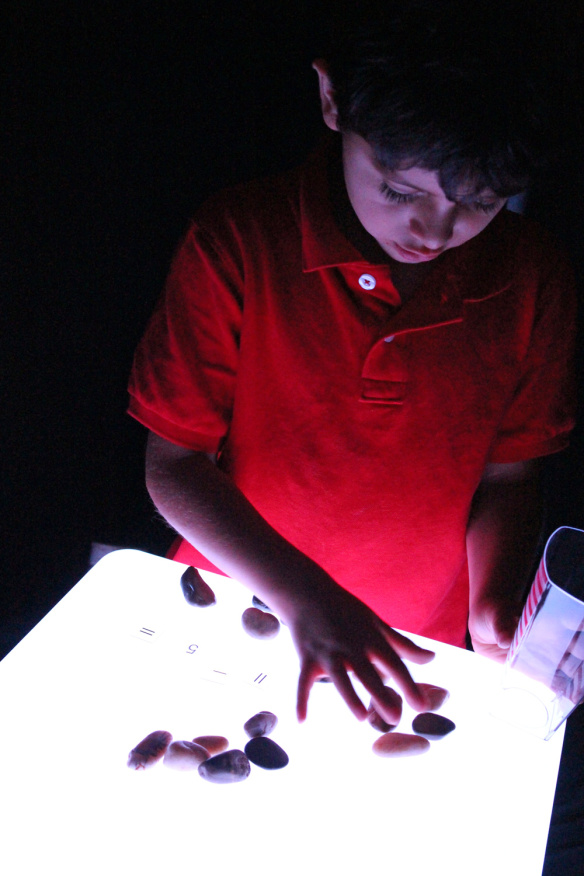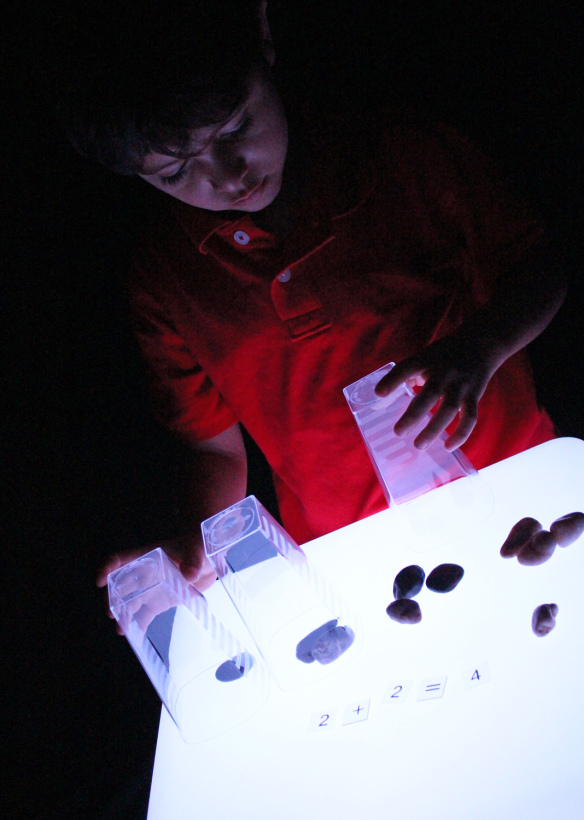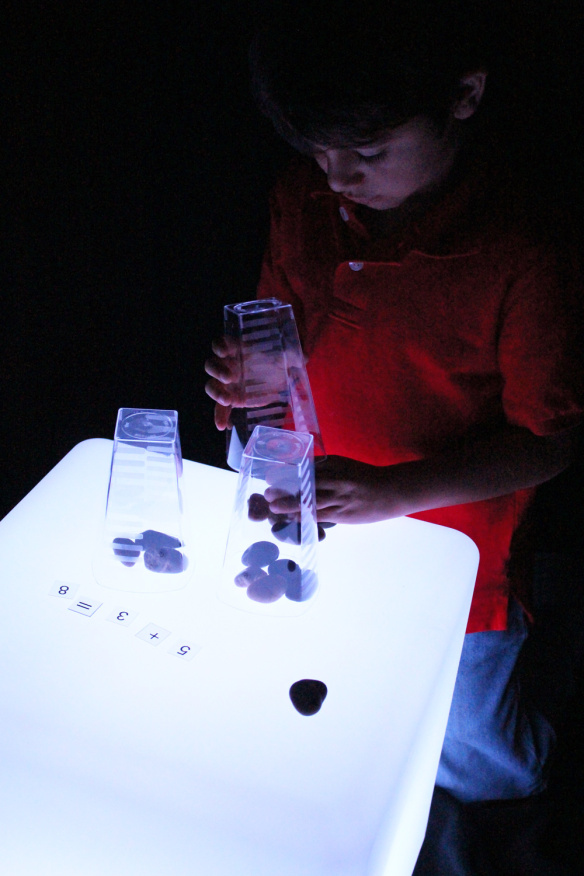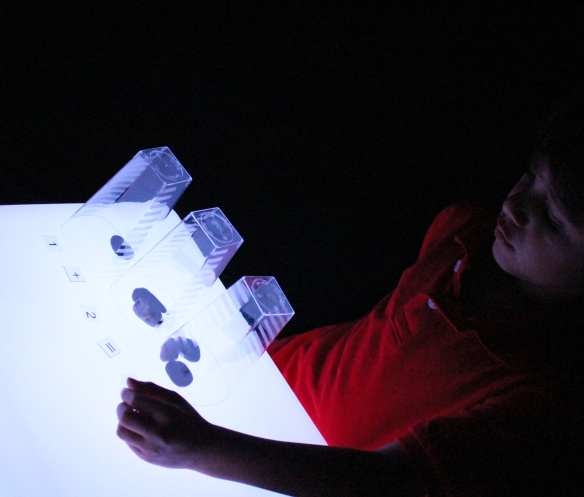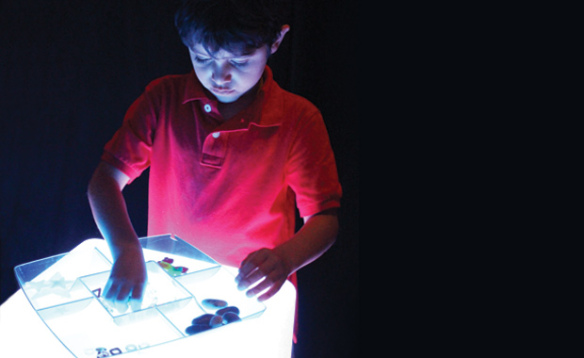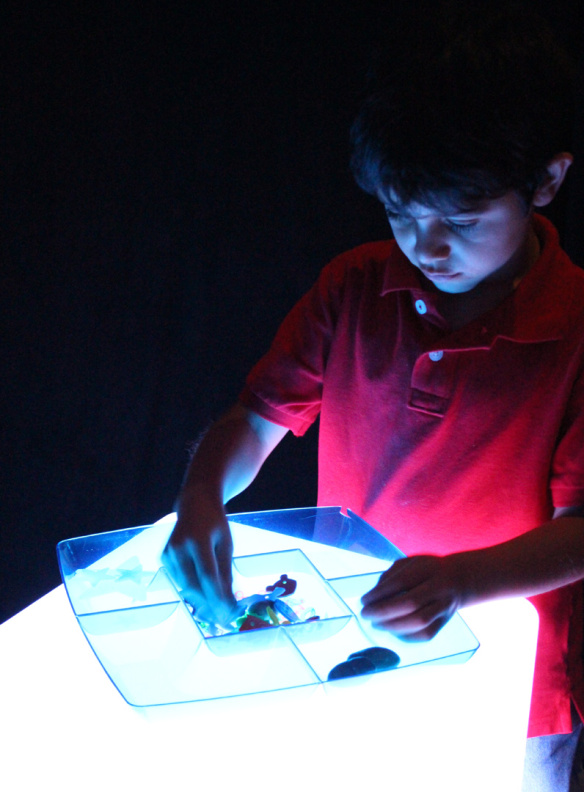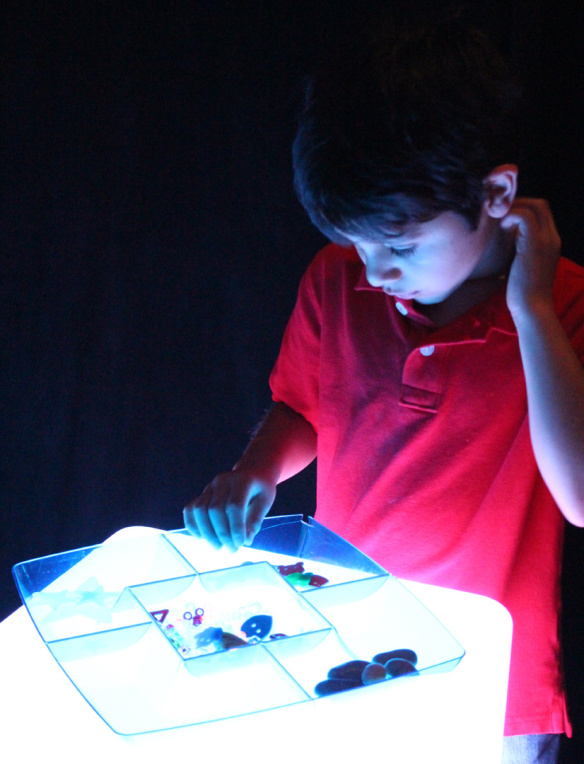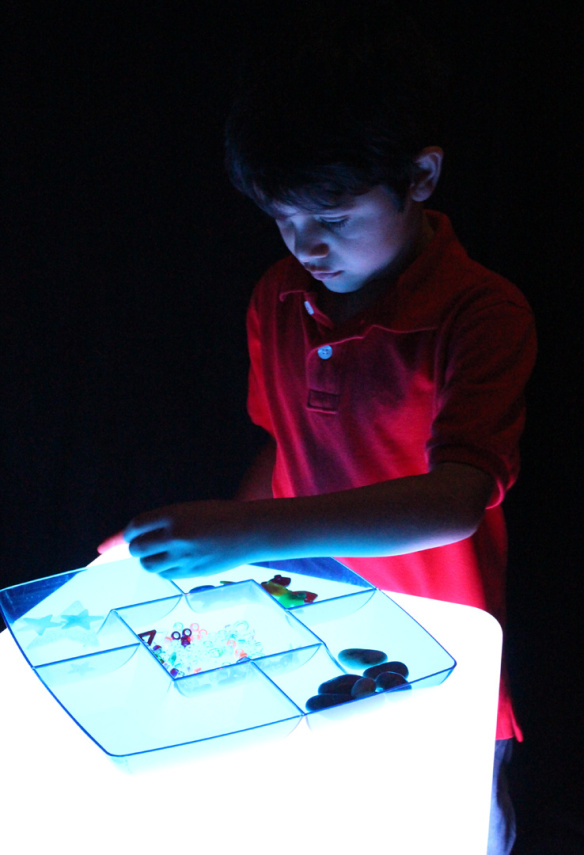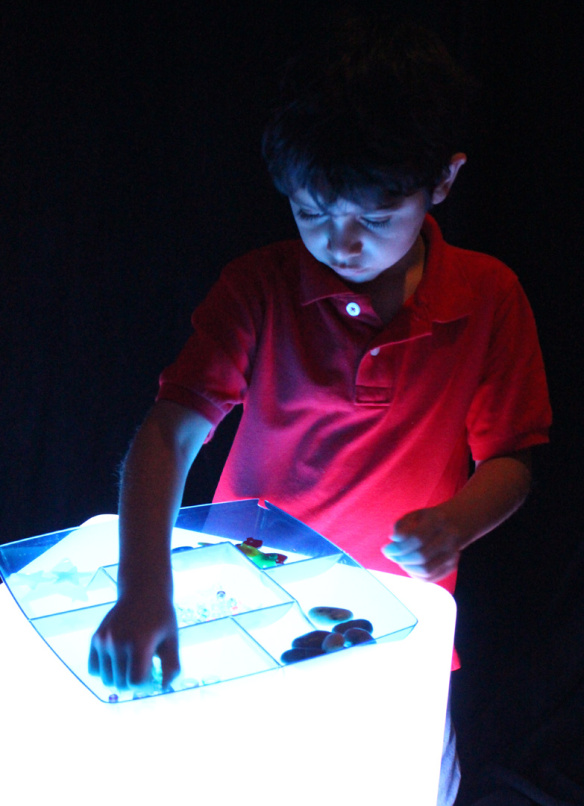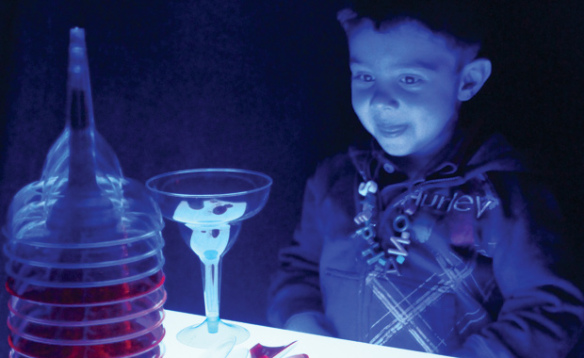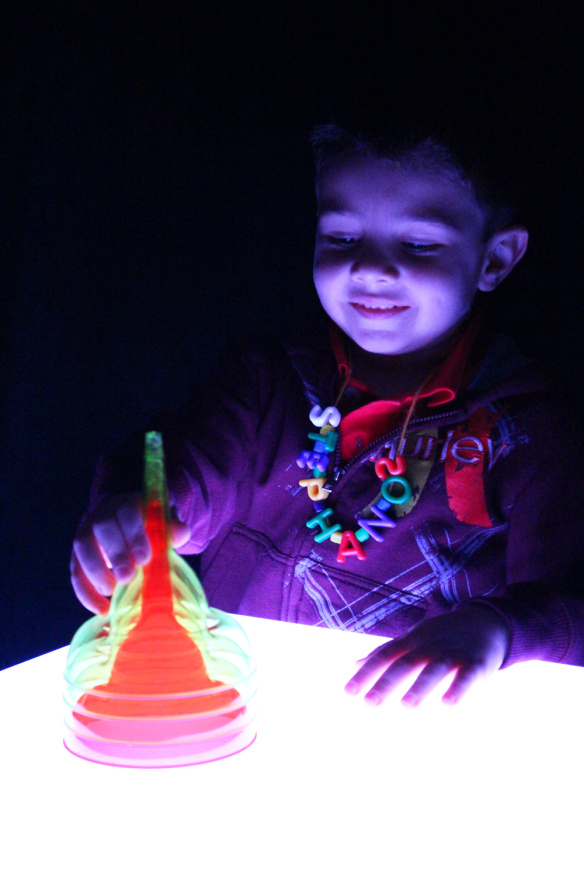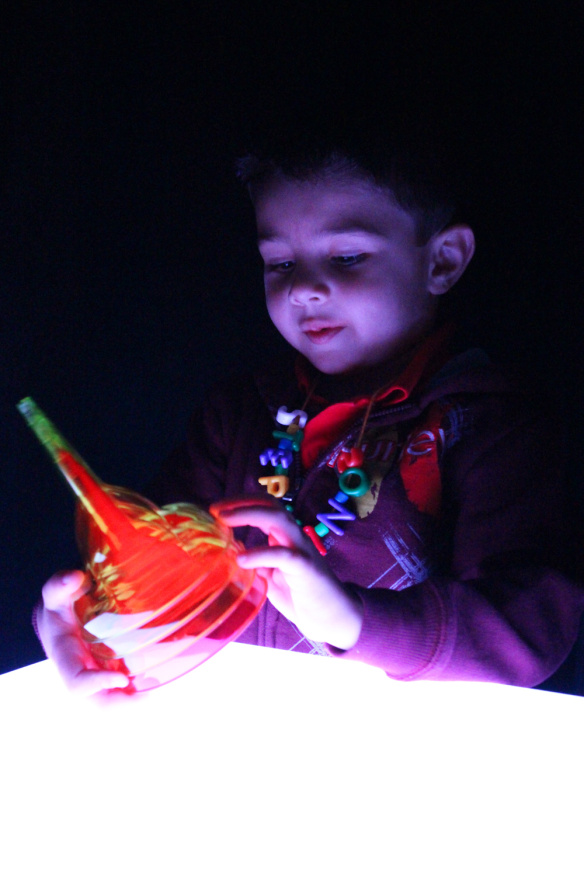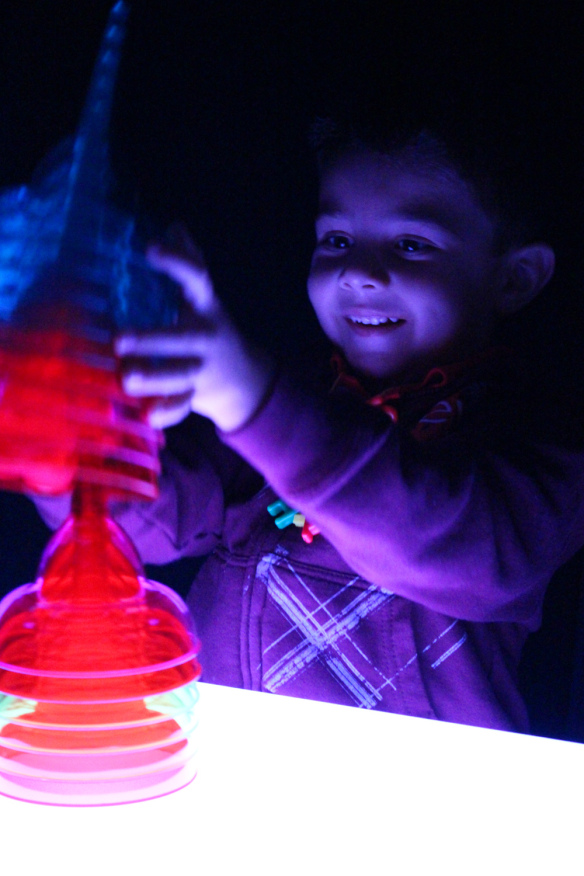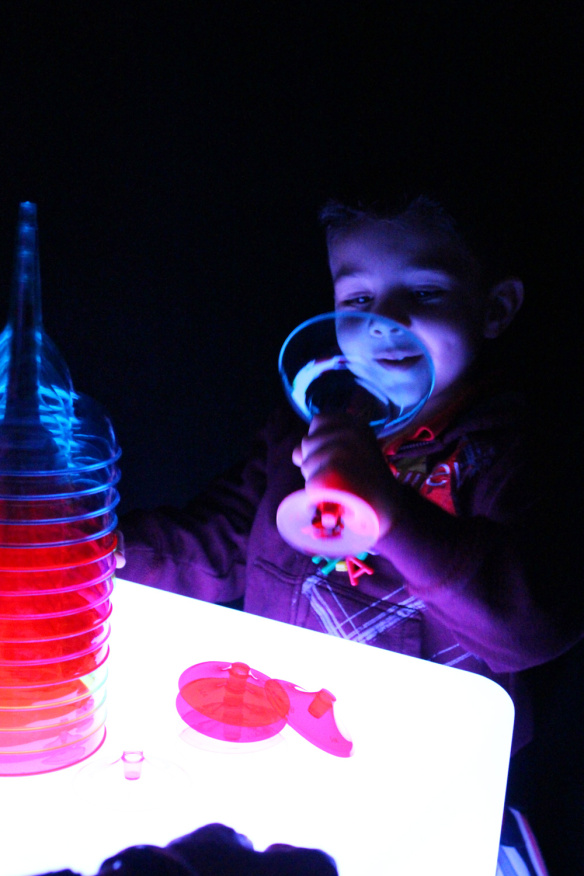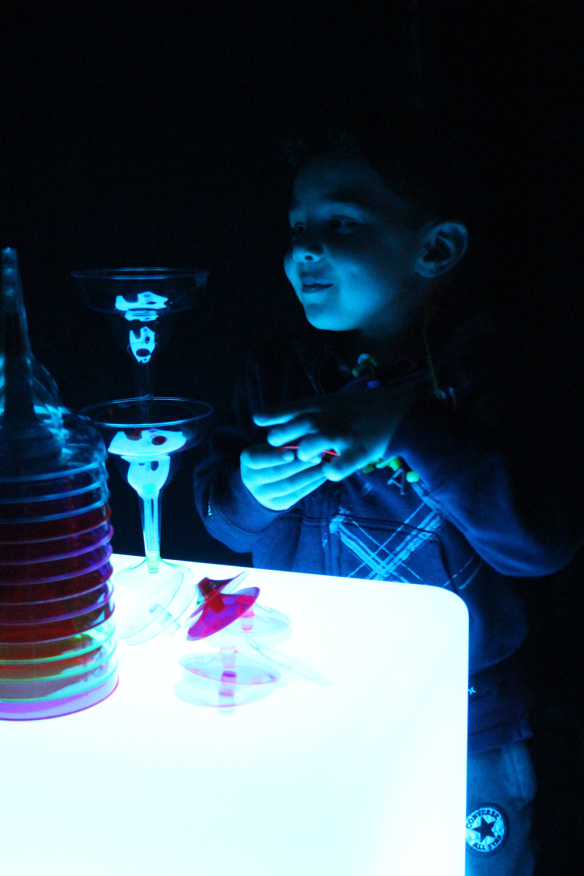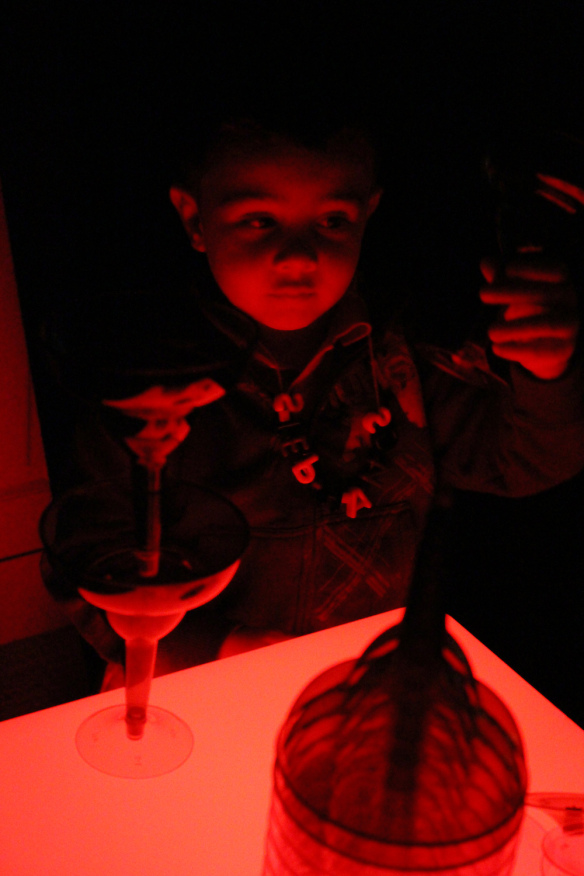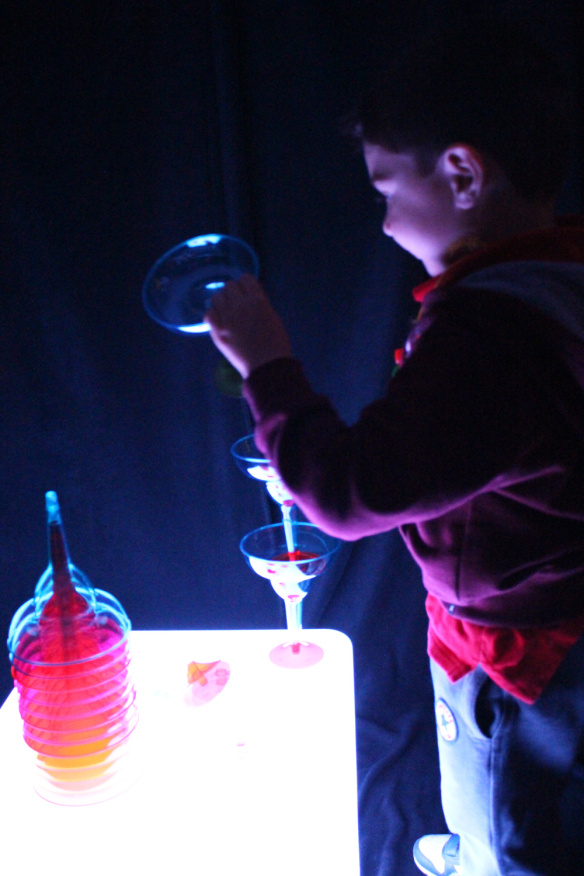Discover the beauty of our wonderful R60310 Crystal Color Stacking Blocks! Stack up the clear color blocks to form new colors. Place on top of Roylco’s R59601 Educational Light Cube for even greater light effects!
To start, we began by placing the blocks directly onto the R59630 Light Cube with the light turned off. We let the campers explore the blocks on their own first. This was a great exercise for kids as they described the block colors and stacked the blocks according to the grooves on the back.
As soon as we turned the Cube on, all eyes were on it!
It was absolutely mesmerizing, even for the most active kids.
Next we placed the R59630 Sensory Tray onto the Light Cube. As you can see from the photo above, the clear tray allows the bright colorful light of the Light Cube to shine through. We also added a bit of sand to the inside and challenged the young architects to build the strongest tower they could make. The tower had to withstand the vibrations of the Sensory Tray once we turned it on.
Accepting their challenges, the campers filled the bottom blocks with sand to secure the structure in place.
They continued to fill the blocks with sand until they realized it might be too top heavy to withstand the force of the vibrations. We tested it out and sure enough, the whole thing toppled from the top down!
Next, they tried a different formation. They flipped the blocks the correct way and buried the edges into a pile of sand, thinking that this might be the trick to getting the tower to stay upright.
The base held together after we turned the Sensory Tray on, but not the top! Since they stacked multiples of the same block together, those parts fell first. It was a great learning experience, and every time we tried to pack up the activity, the kids begged us, “Just give us 5 more minutes! We need to build a stronger tower!”
Like us on Facebook, Share this post with your friends, or Subscribe to this blog today to receive original craft project updates every Monday, Wednesday and Thursday!

